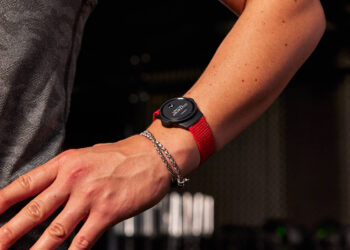Technology has become an integral aspect of most health clubs, from club management software and heart rate tracking to 3D body scanning and virtual fitness. In addition, predicting what technologies will become important is another aspect club operators must grapple with.
For Newtown Athletic Club, facial recognition technology is one of the future-facing technologies that will become more relevant in years to come. In fact, they’re already testing it via Tinoq, Inc., a technology company based in Silicon Valley that provides comprehensive business intelligence based on club usage data.
Kate Golden, the director of people and fitness operations for Newtown Athletic Club, recently spoke with Club Solutions about the facial recognition technology and the value it’s bringing to the club.
CS: How are you using Tinoq and what are the benefits?
KG: At the member check-in point, Tinoq is able to assign each member a unique identifier to track their location within your club. The Tinoq software will help manage equipment usage and space utilization for the whole club, but our group fitness director, Erin Lotta, and I have been assisting with the development of their group fitness management software. The software collects unique member counts, uploads the data automatically into the system and provides predictive analytics to better manage your class schedule, space utilization, instructor performance and increase the efficiency of the instructor substitution process.
The simplest form of the technology is the accurate class participation numbers. However, the data obviously can go much deeper. The system provides each instructor a score by class as well as an average based on the member count, time of day, day of week, variety of classes taught, and return rate of members. This information allows the system to automate the subbing process. It will approve the instructor with the highest score for that class, predicting that members will enjoy the sub chosen and keep high attendance. With over 225 classes a week, this function alone has saved our group fitness director 10 hours per month.
The system also reduced cost per class, including licensing fees. We had consistently higher numbers with an instructor-created class, than a class we had licensed with a fee. So we cancelled the subscription-based class and held our own workshop and launched a program, saving a few thousand dollars each year.
It also keeps our instructors engaged as they see their score daily. It is an objective way to manage and make class schedule changes, which has improved our communication with both instructors and members.
CS: Do you think facial recognition technology is a trend clubs should be paying attention to and consider implementing?
KG: Clubs have to be cautious of the privacy laws in each state, but identifying members who lack a plan when entering your club and being able to engage with them directly to help guide them will allow health club operators to keep the promise we made them when we sold them a membership.
Being able to optimize space based on member usage, demographics and your market’s demographics — I think knowing what your members do inside your club will keep you ahead of the curve.
CS: What advice could you give to other club operators on how to successfully implement facial recognition technology?
KG: I think the best way is to over-communicate to your internal teams that the overall goal of the system is to improve our space utilization, programs and the member experience. Most instructors were excited about the change and that they didn’t have to manually submit their class numbers and payroll.
Also, you want to make sure your employees have talking points for when members ask questions. It is important to know that the system is not taking pictures and storing them.
CS: What else can you share about facial recognition technology that our readers might be interested in?
KG: The data and analysis of just a few clubs has been able to predict equipment issues, member attrition correlations and so much more. For example, a member who does not warm up on the elliptical is more inclined to terminate their membership than the member who completes a warm up. This simple data point can help guide our marketing and education to our members and even the future of cardio equipment programming.
I love data, but many ask if it is ever too much. Personally, if we can improve our business to help more people exercise and engage with more members to help them in their health and fitness journey — I say bring on the data. However, it is important to remember that systems are only as good as the people using them.
Stay ahead in the fitness industry with exclusive updates!
Rachel Zabonick-Chonko is the editor-in-chief of Club Solutions Magazine. She can be reached at rachel@peakemedia.com.












Nicely done article. Very clear on the benefits of this innovative technology. Thank you.
Hello
I would love to have more information on the company that use (Newtown Athletic Club)and also the company that develop the facial recognition technology.
I’m very interested !
Thank you
Hi Mark, Phil Bonomo here with Tinoq. I am happy to give you more info. If you go to our website, http://www.tinoq.com and request more information, I will reach out to you so we can have a chat. Phil